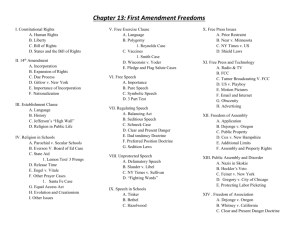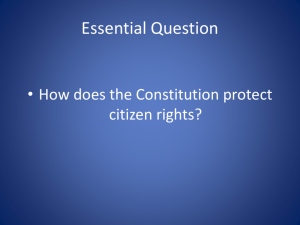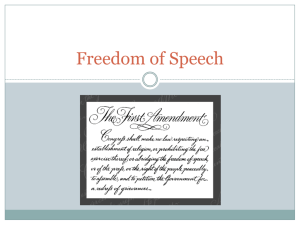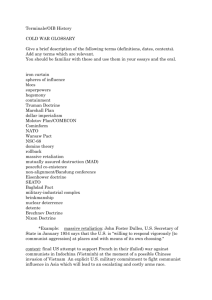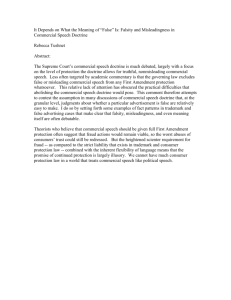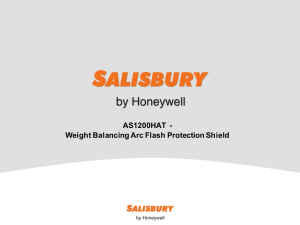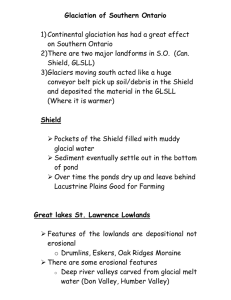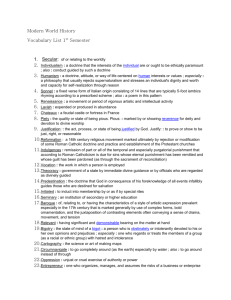study guide - Westerville City Schools
advertisement
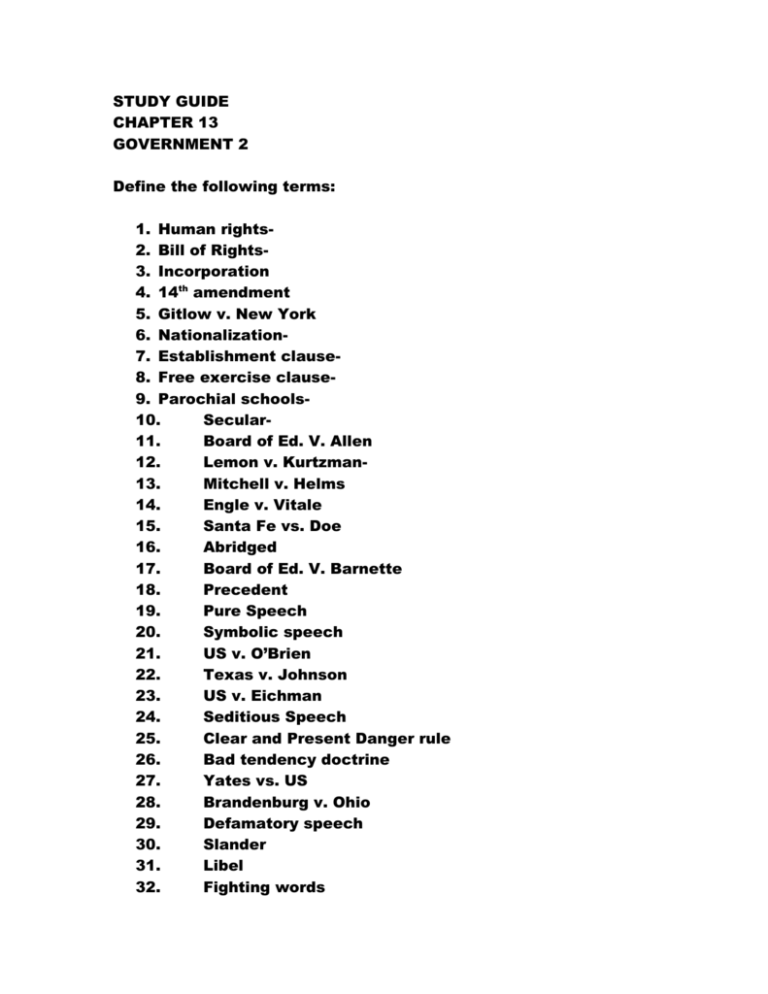
STUDY GUIDE CHAPTER 13 GOVERNMENT 2 Define the following terms: 1. Human rights2. Bill of Rights3. Incorporation 4. 14th amendment 5. Gitlow v. New York 6. Nationalization7. Establishment clause8. Free exercise clause9. Parochial schools10. Secular11. Board of Ed. V. Allen 12. Lemon v. Kurtzman13. Mitchell v. Helms 14. Engle v. Vitale 15. Santa Fe vs. Doe 16. Abridged 17. Board of Ed. V. Barnette 18. Precedent 19. Pure Speech 20. Symbolic speech 21. US v. O’Brien 22. Texas v. Johnson 23. US v. Eichman 24. Seditious Speech 25. Clear and Present Danger rule 26. Bad tendency doctrine 27. Yates vs. US 28. Brandenburg v. Ohio 29. Defamatory speech 30. Slander 31. Libel 32. Fighting words 33. 34. 35. 36. 37. 38. 39. 40. 41. 42. 43. 44. 45. 46. 47. 48. 49. 50. Bethel v. Fraser Hazelwood v. Kuhlmeier Prior restraint Near v. Minnesota NY Times vs. US Sequestered Gag order Shield laws FCC US v. Playboy Reno vs. ACLU DeJonge v. Oregon Picketing Heckler’s veto/Nazis in Skokie Feiner v. New York Gregory v. Chicago Thornhill v. Alabama Dennis vs. United States Short answers: 51. Give examples(3) of the Clear and Present danger rule. 52. Explain the difference between the Establishment clause and the Free Exercise clause. 53. Explain whether or not a shield law should apply when a reporter’s confidential source has information about a crime that would allow it to be solved. 54. For what reasons is Freedom of assembly limited? 55. Explain how student rights are different from adult rights with respect to Free Speech, Free Assembly, Free Expression and Freedom of religion. 56. Explain why the preferred position doctrine might be affected by a national emergency, such as war. 57. Is the relationship between the US government and religion truly separate? Use three examples real or hypothetical.
